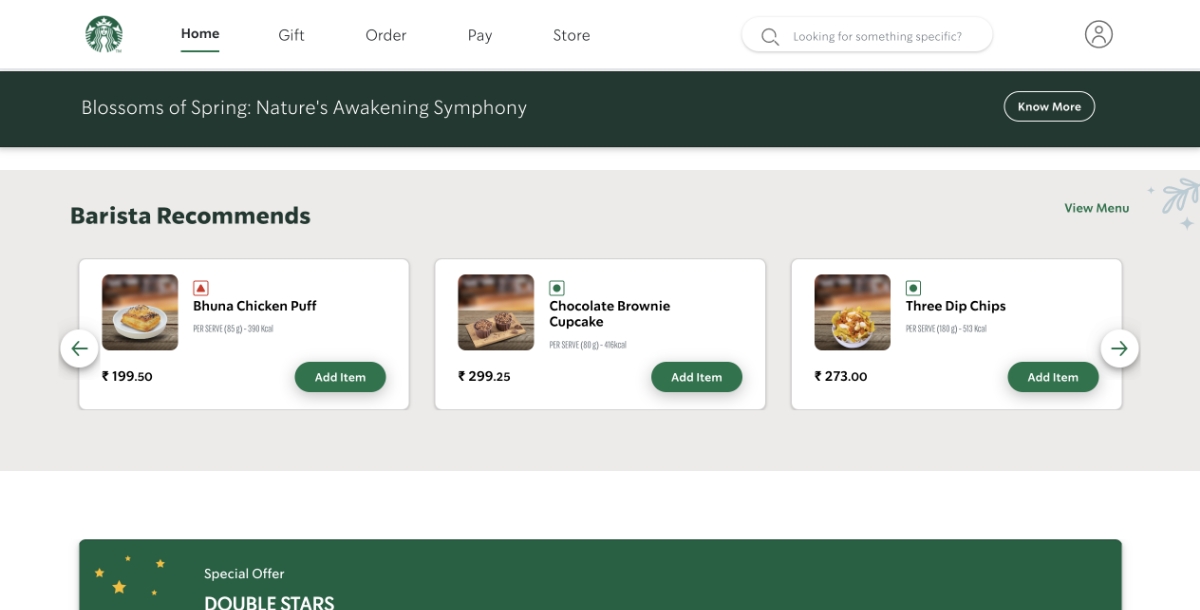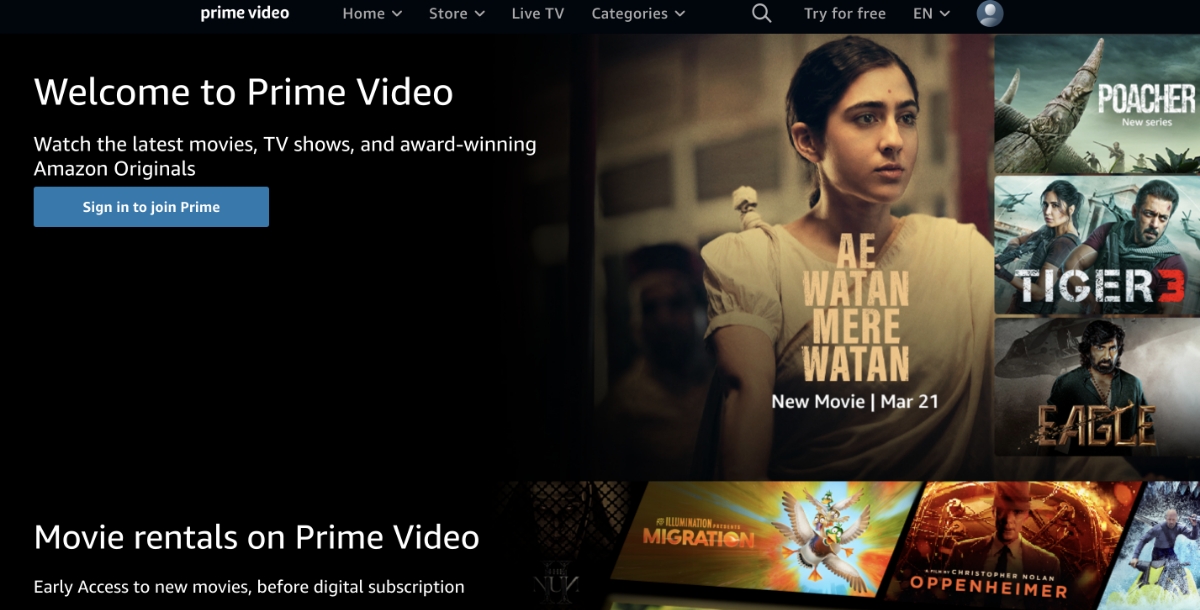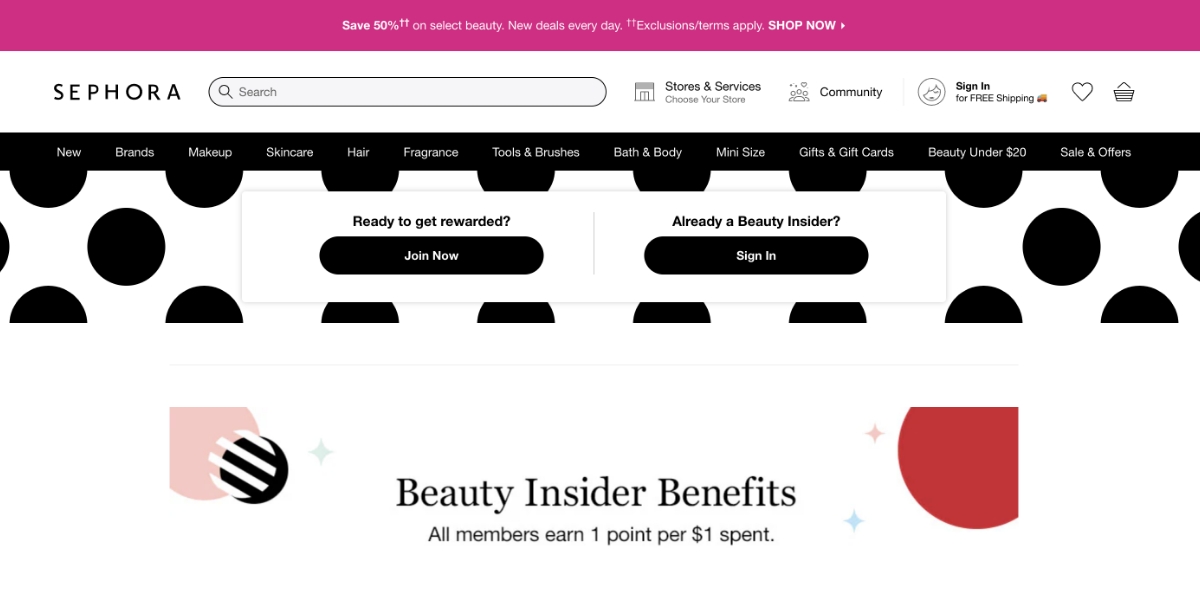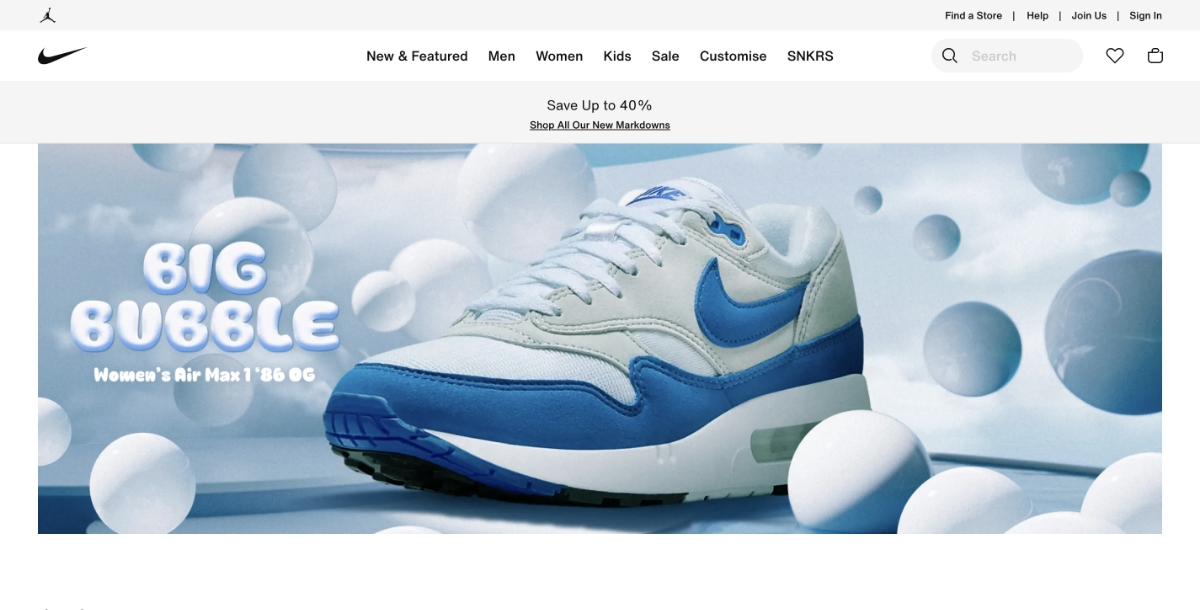Know Everything About Customer Loyalty Program (10 Best Examples)

Have you ever noticed how a simple purchase can bring you an unexpected reward, sparking a little joy and the anticipation of what might come next? This cycle of happiness and anticipation is the crux of customer loyalty programs, a key strategy businesses use to keep you coming back for more. But what are customer loyalty programs, and why do they hold such importance? Whether you're here to satiate your curiosity or to discover how this strategy could benefit your own business, this blog promises to be a treasure trove of insights.
From understanding the mechanics behind these programs to exploring their significant impact, we invite you to join us on this enlightening journey.
Keep reading to know the secrets of building lasting customer relationships and driving business success through effective loyalty strategies.
What are Customer Loyalty Programs?
Just like in any personal relationship, the bond between a customer and a business thrives on mutual benefits. When customers choose to support your business by making a purchase, they're not just looking for a product or service—they're seeking a rewarding experience that acknowledges their choice. This is where customer loyalty programs come into play, transforming every transaction into an opportunity for businesses to express gratitude and for customers to feel valued.
Why are customer loyalty programs important?
Here are eight compelling reasons why implementing a customer loyalty program is a game-changer for businesses:
-
Improves Customer Retention:
Much like nurturing a friendship, keeping your customers close by making them feel valued is key. Loyalty programs, with their rewards and perks, are a direct way of saying "Thank you for staying with us," ensuring customers have more reasons to return.
-
Increases Customer Lifetime Value and Repeat Business:
Regular customers often spend more over time, and loyalty programs accelerate this process by encouraging frequent purchases through gamification and rewards, enhancing the customer's lifetime value to your business.
-
Boosts Revenue:
When customers are motivated to buy more often and spend more with each purchase, revenue naturally increases. This boost is significantly fueled by tailored rewards that meet your customers' preferences and needs.
-
Builds Stronger Customer Relationships:
Loyalty programs go beyond transactions; they are about creating a community of your brand's enthusiasts. They open a channel for ongoing engagement, making every customer feel like part of your business's journey.
-
Differentiates a Brand from Its Competitors:
In a market where customers are bombarded with choices, a well-crafted loyalty program sets your brand apart, offering unique value that competitors may not provide.
-
Encourages Word-of-Mouth Marketing:
Satisfied members of your loyalty program are likely to share their positive experiences and rewards with friends and family, acting as brand advocates and leveraging the power of personal recommendations.
-
Shows Customers Appreciation:
At its heart, a loyalty program is a way of showing appreciation for your customers' business. This recognition goes a long way in deepening their loyalty and enhancing their overall satisfaction.
-
Drives Customer Satisfaction:
By offering rewards that customers actually want, you're not only acknowledging their loyalty but also enhancing their satisfaction with your brand, which is crucial for long-term success.
In today's digital age, creating a loyalty program is more accessible than ever before, thanks to a variety of loyalty app builders available in the market. These platforms make it easy for businesses of all sizes to implement sophisticated loyalty programs that engage customers and drive repeat business. Whether you're looking to offer exclusive discounts, early access to new products, or rewards for social media engagement, there's a solution that can be tailored to meet your needs and exceed your customers' expectations.
How Do Loyalty Programs Work?
Loyalty programs operate on a simple yet powerful premise: reward customers for their repeated business to encourage ongoing engagement and loyalty. At the heart of these programs is the concept of gamification customer loyalty, which introduces elements of play and competition to the shopping experience, making customers more inclined to participate actively. This strategy not only enhances customer satisfaction but also significantly boosts the business's ability to retain customers. But how exactly do these loyalty programs work? Let’s delve into their mechanics, emphasizing the importance of integrating the following SEO keywords: gamification customer loyalty, why are customer loyalty programs important, and what are customer loyalty programs.
The Mechanics of Customer Loyalty Programs
-
Membership Enrollment:
The first step for customers is to sign up for the program, usually through a simple registration process. This can be done in-store, online, or via an app. The ease of sign-up is crucial for encouraging participation right from the start.
-
Earning Rewards:
Once enrolled, customers earn rewards for various actions, such as making purchases, referring friends, or engaging with the brand on social media. The rewards can be in the form of points, discounts, exclusive offers, or access to special events. The gamification aspect comes into play here, as customers can track their progress, compete with others, or unlock new rewards as they achieve certain milestones.
-
Redeeming Rewards:
The points or rewards earned can then be redeemed according to the program’s specific rules. Options might include discounts on future purchases, free products, or special services. The anticipation of earning rewards and the satisfaction of redeeming them reinforce positive feelings towards the brand, encouraging repeat business.
-
Personalized Experiences:
Many loyalty programs leverage customer data to offer personalized experiences or rewards, further enhancing the value of the program to each individual. This personal touch not only makes customers feel valued but also increases the effectiveness of the program.
10 Types Of Customer Loyalty Programs
Customer loyalty programs are diverse and designed to cater to different business models and customer preferences. Here are 10 types of customer loyalty programs that businesses use to engage their customers and encourage repeat purchases:
-
Points Programs:
Perhaps the most common type, points programs allow customers to earn points for every purchase they make, which can then be redeemed for rewards such as discounts, gifts, or exclusive products. This system encourages continued patronage by offering tangible rewards for shopping.
-
Tiered Loyalty Programs:
These programs categorize members into different levels or tiers based on their engagement or purchase history. As customers move up the tiers, they unlock increasingly valuable rewards, encouraging them to spend more to reach higher tiers.
-
Cashback Programs:
Customers receive a percentage of their purchases back as cash rewards, which can either be applied to future purchases or withdrawn. This straightforward reward mechanism is easy for customers to understand and appreciate.
-
Punch Cards:
A digital or physical card is used to track purchases, and after a certain number of purchases have been made, the customer receives a free product or service. This is a popular choice for cafes and small retail stores.
-
Membership Programs:
These programs require customers to pay a fee to join, either a one-time signup fee or a recurring subscription. In return, members gain access to exclusive benefits, discounts, or services not available to non-members.
-
Referral Programs:
Customers are incentivized to refer friends or family to the business by offering them rewards for each successful referral. This not only increases the customer base but also strengthens existing customer relationships by rewarding loyalty.
-
Partnered Programs:
Businesses collaborate with other companies to offer reciprocal benefits to their loyalty program members. This type of program can add value for customers by providing a wider range of rewards and benefits.
-
Game-ified Loyalty Programs:
Incorporating elements of gamification, these programs make earning rewards fun by adding challenges, competitions, or milestones for customers to achieve. This engages customers in a more interactive and entertaining way.
-
Value-Based Programs:
Aligning with customers' values, these programs donate a portion of purchases to a charitable cause or engage in ethical practices that resonate with the customer base. It's a way of building loyalty by connecting over shared values.
-
Hybrid Programs:
Combining elements from various types of loyalty programs, hybrid programs offer flexibility and variety to cater to a wide range of customer preferences. This approach allows businesses to tailor their loyalty strategy to their unique audience.
Each customer loyalty program is unique and can be customized to meet the needs of your business and its customers. To easily create an app for your program, use Appy Pie’s Loyalty App Builder. It's a straightforward tool that boosts customer engagement and fosters a strong community. For more tips on enhancing your business marketing strategy, check out Appy Pie Academy.
Incorporate features like free live chat software, free AI chatbot, and AI chatbot for websites into your app to elevate customer service. These tools provide instant answers, making customers feel appreciated. Utilizing a customer support chatbot chatbot maker and live chat software simplifies query management, freeing up your help desk for more complex tasks. Integrating these technologies into your loyalty app not only streamlines customer support but also reinforces customer loyalty.
Examples of Successful Customer Loyalty Programs
Here are the best examples of successful customer loyalty programs:
1. Starbucks Rewards:

Starbucks uses a tiered loyalty program where customers earn stars for every purchase. These stars can be redeemed for free drinks, food items, and more. The program also offers birthday rewards, free in-store refills, and mobile ordering and payment through the Starbucks app.
2. Amazon Prime:

Although it's a paid subscription, Amazon Prime is a prime example of a loyalty program that offers immense value through free two-day shipping, access to streaming services, exclusive deals, and more. The convenience and value provided make customers more likely to shop on Amazon consistently.
3. Sephora Beauty Insider:

Sephora's program rewards customers with points for every dollar spent, which can be redeemed for products and beauty experiences. It features a tiered system that offers more exclusive benefits as customers move up the tiers, from Insider to VIB to Rouge.
4. Nike Plus:

Nike Plus rewards customers not just for purchases but for engagement. Members get access to exclusive products, birthday rewards, and even personalized training plans. It's a holistic approach that fosters a deeper connection between the brand and its customers.
How to create a customer loyalty program
Creating a customer loyalty program involves strategic planning and understanding your customer base to offer rewards that truly resonate with them. Here's a step-by-step guide to creating an effective customer loyalty program:
1. Define Your Objectives:
Start by identifying what you want to achieve with your loyalty program. Common goals include increasing customer retention, boosting average order value, and enhancing customer engagement. Clear objectives will guide the structure and rewards of your program.
2. Understand Your Customers:
Dive into your customer data to understand their buying behavior, preferences, and needs. This insight will help you tailor your loyalty program to offer rewards and experiences that are meaningful to your audience.
3. Choose the Type of Loyalty Program:
Decide on the type of loyalty program that best fits your business and customer base. Whether it's a points program, tiered rewards, cashback, or something more unique, the right model will align with your customers' preferences and your business goals.
4. Select Your Rewards:
Your rewards should be enticing enough to motivate customer participation. Consider offering discounts, exclusive access, free products, or services. Ensure the rewards are attainable but also valuable to maintain interest in the program.
5. Leverage Technology:
Use technology to streamline the experience for your customers. Consider developing an app with Appy Pie’s Loyalty App Builder for easy program management and access. Integrating free live chat software or a free AI chatbot can enhance customer support and engagement.
6. Communicate Clearly:
Make sure your customers understand how the loyalty program works and what benefits they can expect. Clear communication through your website, app, and marketing channels is essential for driving participation.
7. Launch and Promote Your Program:
Create a launch plan to introduce your loyalty program to your customers. Use email marketing, social media, and in-store promotions to get the word out. Consider an initial offer to encourage sign-ups.
8. Collect Feedback and Adjust:
After launch, gather feedback from your customers to understand what's working and what's not. Be prepared to make adjustments to the program based on this feedback to better meet your customers' needs.
9. Monitor and Measure Success:
Continuously track the performance of your loyalty program against your initial objectives. Monitoring key metrics such as participation rates, redemption rates, and overall impact on sales and customer retention will help you understand the program's ROI and inform future enhancements.
10. Iterate and Improve:
Loyalty programs should evolve over time based on customer feedback, changing preferences, and business goals. Regularly updating your program will keep it fresh and engaging for your customers.
By following these steps and focusing on providing real value to your customers, you can create a customer loyalty program that enhances your brand's relationship with its customers and drives long-term success.
CTA: To get a free AI chatbot for your website, click here!
Conclusion
Customer loyalty programs are a powerful tool in the modern business arsenal, offering a mutual benefit bridge between companies and consumers. They are about much more than just transactions; they're about building a community of brand advocates and creating lasting relationships. Whether through points, tiers, or exclusive perks, these programs are a testament to the fact that when businesses invest in their customers, the returns can be immensely rewarding. So, the next time you're rewarded for making a purchase, know that it's a part of a much bigger picture—one where loyalty is the currency of choice.
Related Articles
- Mastering IPA Files – Your Guide to iOS App Development in 2024
- No More Ambiguity in 360° Room Layout via Bi-Layout Estimation
- Email Marketing: A Step-by-Step Guide to Crafting Winning Campaigns
- Exploring The Top Calendly Integrations
- Top 10 App Integrations with Stable Diffusion AI
- 15 Cold Email Templates That Dramatically Increase Response Rates
- What are The Benefits of Creating an Insurance Chatbot?
- From Zero to Hero: Cold-Start Anomaly Detection
- 11 Apps That Every Teacher Should Have
- Top 5 Zoho Forms Integrations For Your Business
Most Popular Posts
- Exceptional Qualities of A Great Leader
- Customer Success Playbook: A Comprehensive Manual for Your Company
- How to Write an Effective Privacy Policy For Your Website
- Mauve Color: A Comprehensive Guide to Its History, Significance, and Stylish Combinations
- Best Cold Email Software You Need To Close Deals
